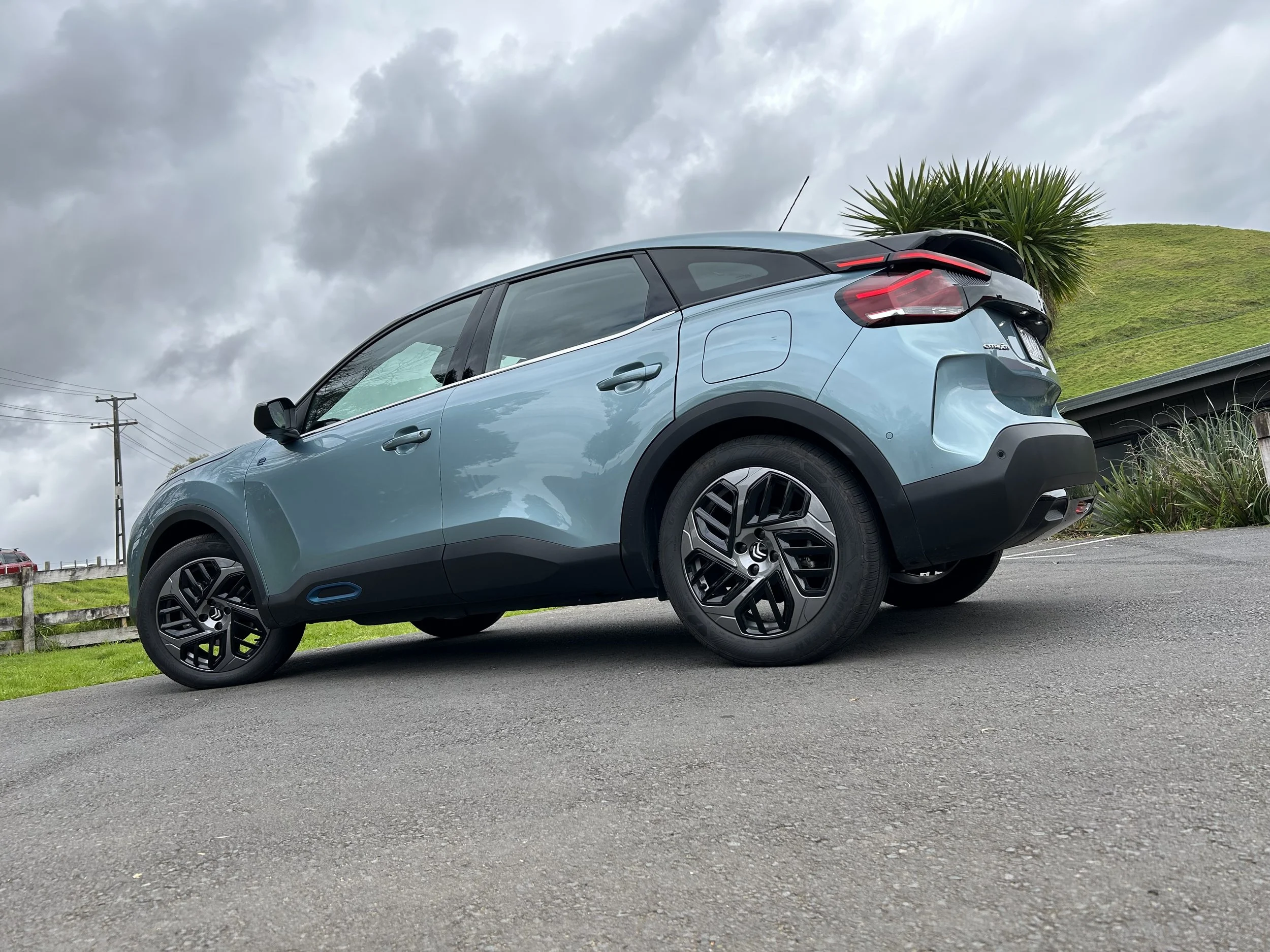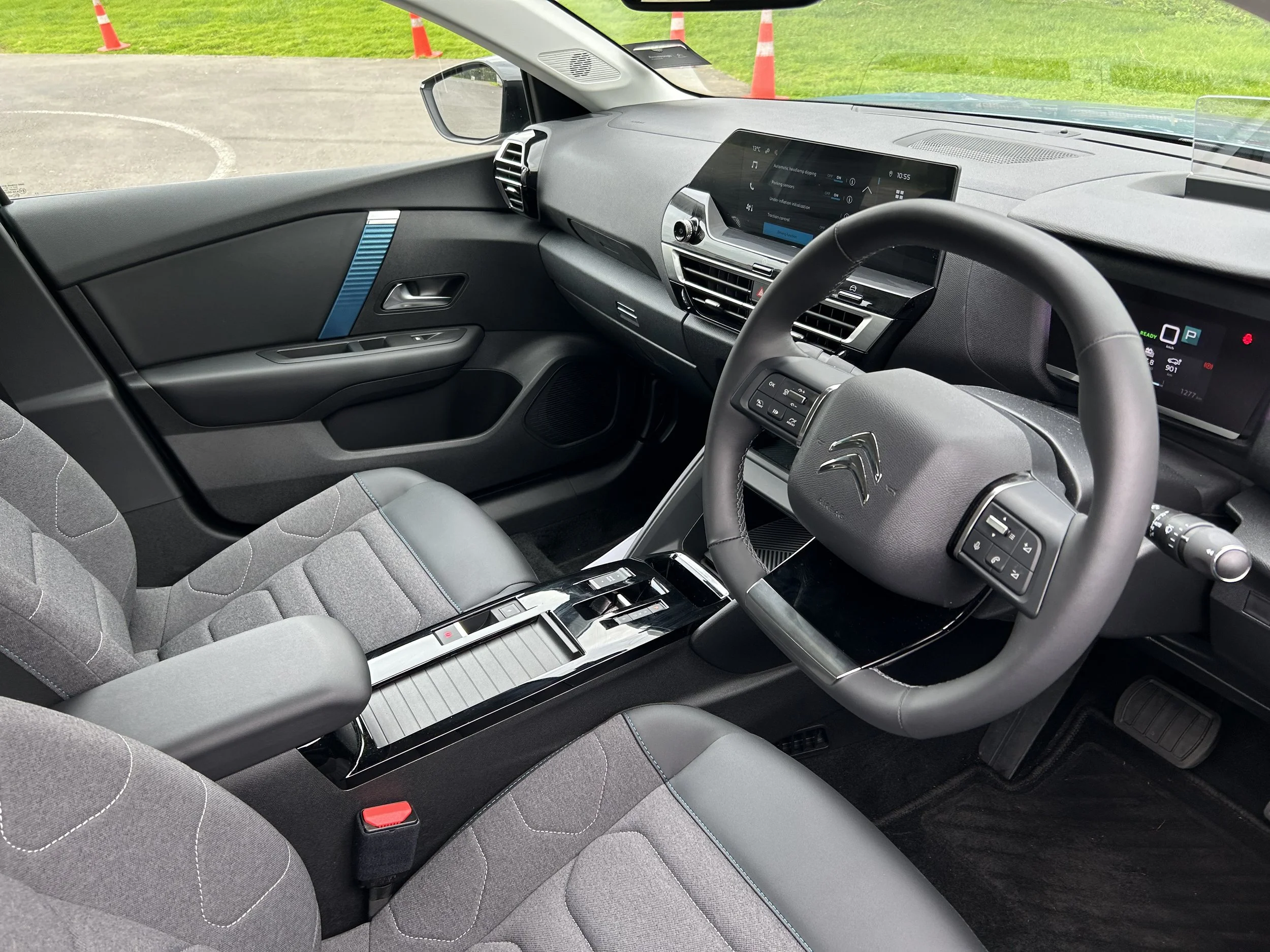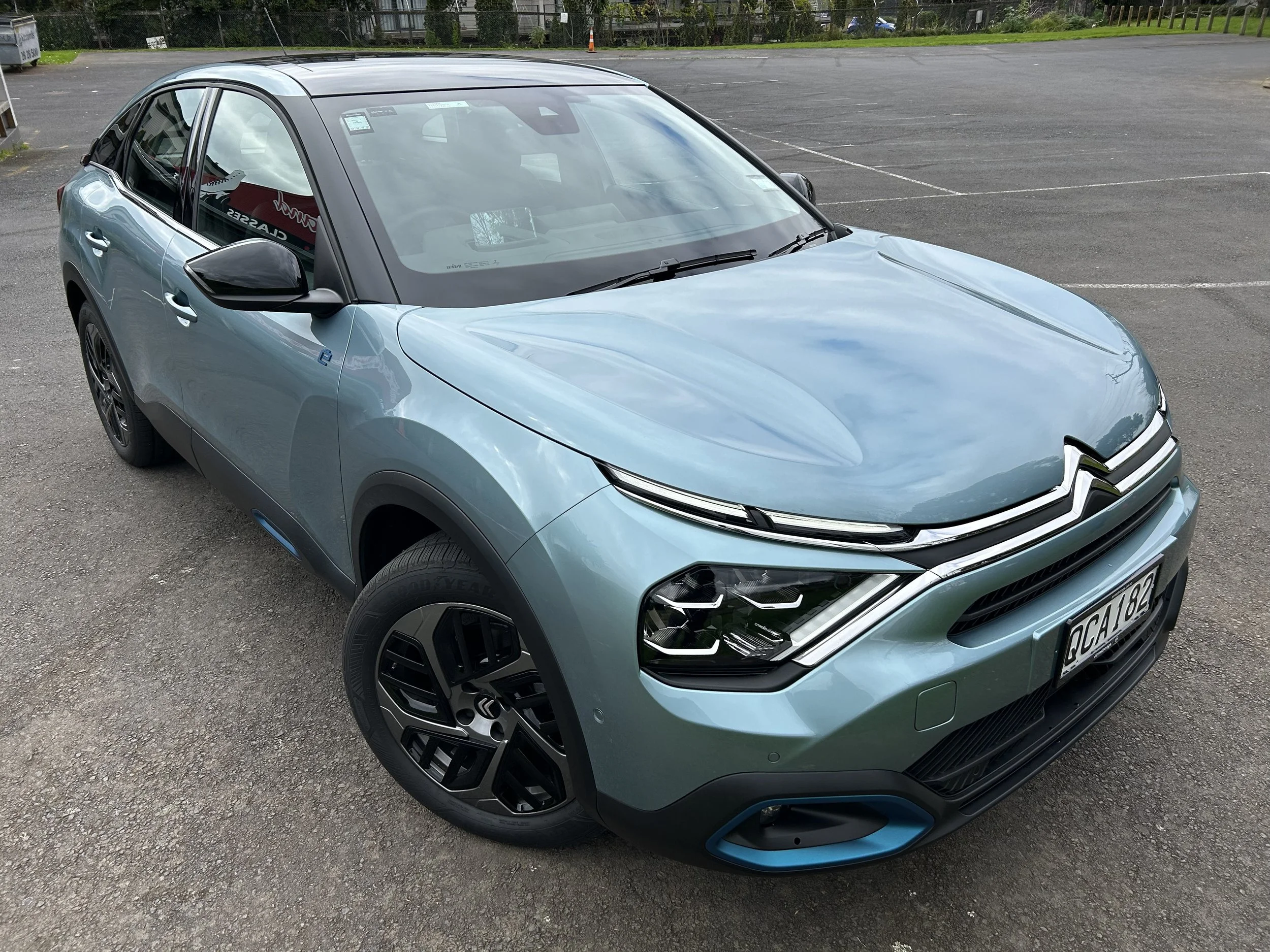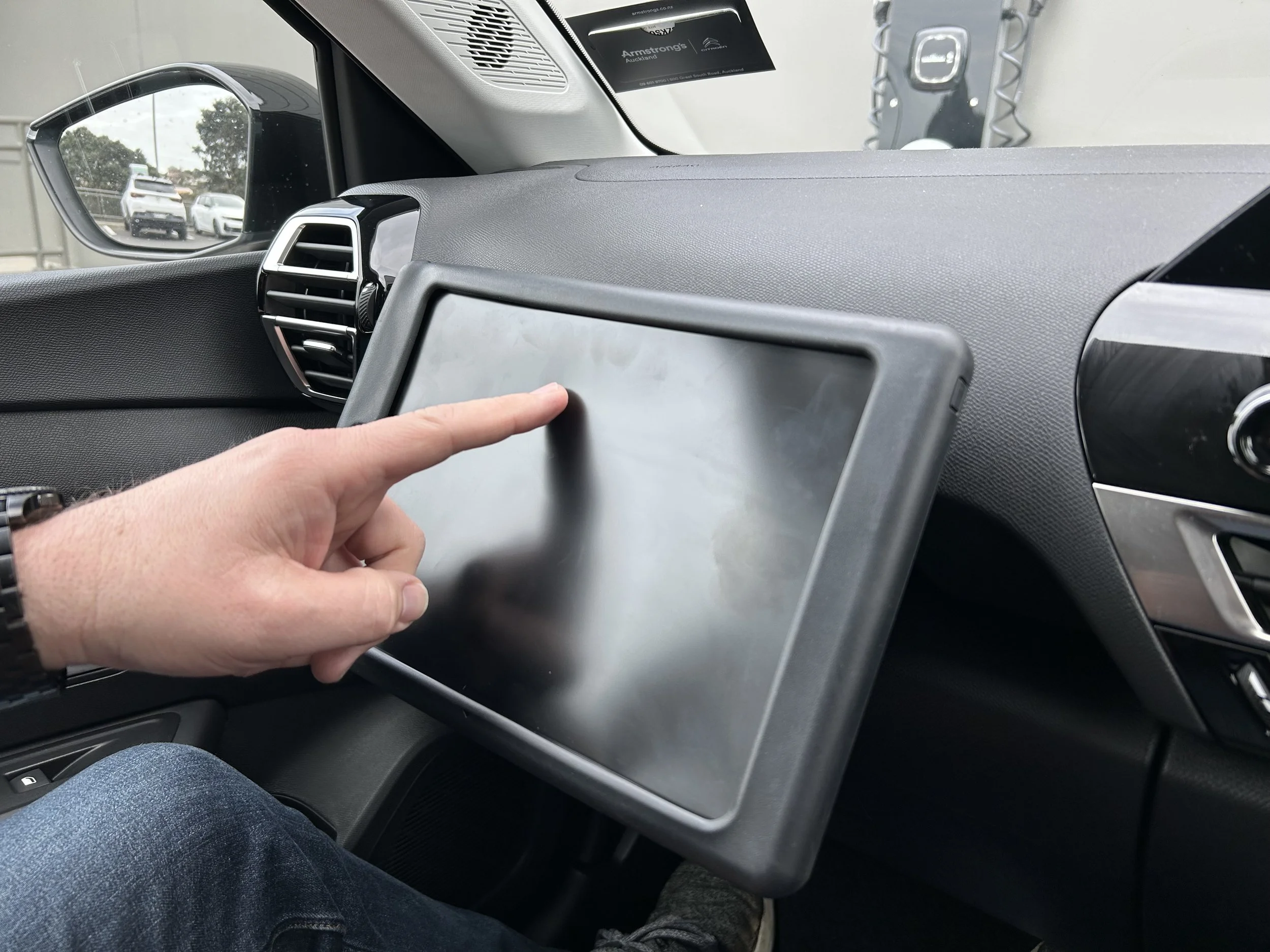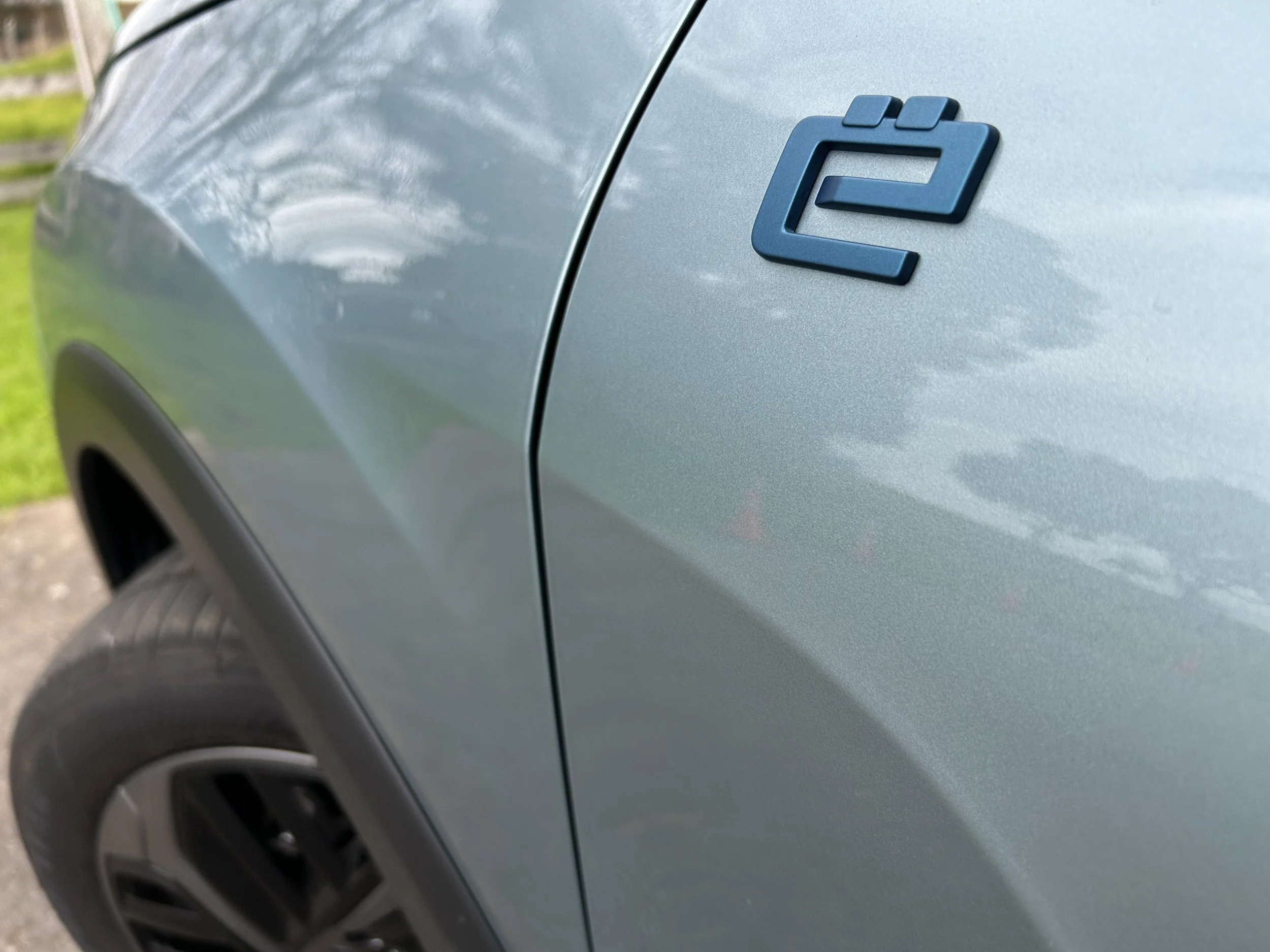Citroen e-C4 Shine first drive: Smoothing the path
/The French brand famous for doing things differently uses old tricks and new on this first local electric offer.
OSTENSIBLY sensible logics help sell top-buy popular electrics here - but perhaps quirkiness also comes into it.
The proposition isn’t daft. As job-worthy as the Nissan LEAF, Tesla Model 3 and BYD Atto 3 are, they’re also all clearly … erm … characterful cars. To point of downright weirdness, either in look, operation or both. (If you don’t belief this, task a total newbie to unlock, then drive, a Model 3).
If quirky is an attribute, then the latest sector entrant stands immediate advantage, given it comes from a world leader in beyond the square thinking. Citroen.
Granted, in first meeting, e-C4 that represents as the double chevrons first wholly electric model doesn’t seem even remotely off-beat.
First and admittedly fleeting perusal - the introductory interaction being, quite literally, a drive around the block - speaks to comparative normality. Save for the obligatory ‘I’m an electric’ cues - special badge and some blue accent trims inside and out - it’s no different in look, overall, the internal combustion engined C4 hatchback it spawns from, also on sale now.
Overall, then, in context of Citroen’s broader history, this is a remarkably straight bat car.
As is the marketing proposition. Citroen has a massively rich brand history. The DS and hydropneumatic, the Deux Chevaux and light car construction. The Traction Avant that, as the world’s first mass-produced, front-wheel drive, monocoque-bodied family model is the template of every modern car.
Heritage aplenty to pluck from. pretty much wholly ignored here. Pourquoi?
There’s sense heritage is only so useful when not only is electric is a fresh start, but Tesla and BYD have proven that having no history is no inhibition.
So, rather than a round of baguette bashing, local distributor Auto Distributors is being more oblique, the e-C4 campaign hinging purely on one heritage ingredient: Comfort.
Delivering this has been a Citroen credo for 100 years. Hence this is proposed as being the most comfortable electric car you’ve experienced. (In the mainstream sector, at least. Rolls Royce might contend its first battery model, the Sceptre, takes overall crowning glory).
The cushiness begins with the supportive nature of the front seats, but that’s the entree. The house speciality is the Progressive Hydraulic Cushions suspension.
All those world rally championship titles remind that Citroen knows how to do properly sporty if it wants to. But decent ride has been a marque 101 for a century.
Without going into technicalities, while hydraulic fluid is still involved, PHC is quite different to the hydropneumatic system is once preferred.
With e-C4, the setup replaces traditional hard rubber 'bump-stops' into which the suspension bashes when you use up all of its available travel, and instead uses a reservoir filled with hydraulic fluid. But it still has steel springs. So, orthodox and yet, not quite.
While Citroen says it is softer than most others and will be never anything other than supple, whether it provisions anything akin to the magic carpet ride of classic Citroens, with their 'Hydragas' fluid-filled suspension, will require a proper test.
With Citroen’s past, it seems churlish to contest any such claim without having given it a good try. But it wasn’t at all jolty on the route within Auckland’s Mt Wellington precinct, where Auto Distributors headquarters. If the e-C4 is up to snuff on this respect, then it will interesting how different it is compared with the sister models from Opel and Peugeot that both take a rather sporty approach. If it’s softer over the bumps, will it also trade cornering precision?
That’s a question of relevance not answered by the brief tasting, but demanding consideration given the closeness of all three recipes. Although they share no external body parts, as all are products of the PSA cabal, which in turn is a cog in the giant Stellantis Group machine, means points of difference are tempered by a high level of sameness.
In this respect, the e-C4 shares the same 'EMP1' architecture and all its drivetrain components with the electric editions of the Peugeot e-2008 and Opel’s Mokka-e.
As per those, the single electric motor drives the front wheels, delivering the equivalent of 100kW and 260Nm, feeding off a 50kWh lithium ion battery.
Cited ranges, from using the WLTP scale, see Citroen’s 360 kilometres looking 12km short of the Peugeot and 3km less than the Opel, which might surprise given it has slipperiest-looking shape of the three.
Listen in to electric car types and you’d think that anything with less than 400km-plus range is a lost cause, but fact is most drivers don’t entertain anything close that sort of distance in their regular regime and, on the rare occasion they do, the recharging infrastructure works out for them.
Citroën quotes an average of 15.9kWh/100km electrical consumption, which might be a stretch in NZ conditions. Rapid charging means zero to 80 percent in 30 minutes for the C4 at a fast charger. Charging at home takes just over seven hours with a wallbox, 28 hours without, which is on par with the others.
The stablemates are also rivals, of course, and not only when recommended retails apply. At full RRP Peugeot is $3000 more, the Opel exactly the same $69,990 spend.
At this time - and until the end of September unless stock runs out prior) - all are on special; the Peugeot at $55,975, Mokka-e Sri at $56,990 and the Citroen at an early bird $58,975, all prices before on-roads and the $7015 Clean Car rebate, for which all are eligible.
If it’s an electric, it’s also invariably a crossover these days. The e-C4’s sculpted sides, black cladding around the wheel arches and sills and big wheels are SUV-suggestive, yet it is so barely elevated I’d suggest it’s better considered a staunch-looking hatchback.
Looks are always subjective, but the Citroen’s are okay; it’s a safe shape overall, but the slightly chunky ambience is agreeable, and the styling is nicely finessed. Beyond the usual signature ingredients spanning all double chevron cars, the e-C4 has distinctive V-shaped lighting, the front lamps being LED, and a spoiler built into the tailgate, with a glazed area beneath so rearward visibility isn't too compromised.
Interior quality also seems very reasonable; Citroen favours cost-effective and robust-looking plastics but nothing's outright cheap in appearance.
It might seem a bit odd that a marque with reputation for the unorthodox delivers a layout that is less avant garde than the Peugeot’s or the Opel’s. On the other hand, as a tall driver, it was personally pleasing none of the Peugeot-favoured ‘teensy wheel in the lap’ stuff is going on here. As in the Opel, the C4 has a normal-sized steering wheel with an everyday driving position.
It does, however, share the same instrument panel and infotainment screens that, at 5.5 and 10 inches respectively, seem a bit under-sized by today’s standard. Resolution quality of the centre console screen is poorer than Opel has. Most functions are touch-operated via this screen but, thankfully, there are shortcut buttons below for the air-con and so on.
Citroen here has taken a Shine specification that seems to be mid-spec for the C4, but is reasonably fulsome, except that it stops short of sat nav. Any wanting that will have plug in a phone and use Apple CarPlay or Android Auto, with devices replenishing by wireless charging.
A head-up display, projected via one of those mini pop-up glass screens, seems a bit old-school but it’s effective. It wouldn’t be a Citroen without a gloriously over-engineered feature. In this instance it’s a tablet stand for an iPad. By positioning the passenger front airbag high on the dashboard, Citroen has created additional storage areas above the traditional glovebox. one of these holds the pop-out holder that, when open, allows for users to securely fit a tablet to the dashboard without affecting the safety of the front-seat passenger.
As per the sister electrics, there’s no traditional drive selector but, instead, it gets a small metallic toggle switch and a small button for selecting ‘park'. the driving modes tick off ‘eco’ and ‘sport’ provisions as alternates to the regular setting.
Electrics always deliver snap and the Citroen’s seems to have plenty of torque; however, the motor’s tuning seems to aim for a measured kick-in. Citroen citing 9.7 seconds for 0-100kmh suggests owners shouldn’t throw down the gauntlet to Model 3s. The performance levels are nonetheless more than adequate for the typical urban or city commute and it’ll be decent at 100kmh.
In spite of the sloping rear roof, there seems to be adequate headroom in the back and okay legroom. A transmission hump in the floor is a vestige of the car being based off an ICE product, so perhaps three-abreast in the back isn't going to be easy.
Boot capacity of 380 litres is class-average but the rear seats fold down to lend 1250 litres’ maximum volume, plus there’s an adjustable boot floor. What’s impressive is that Citroen has not had to sacrifice, as some makers do, any of the boot space to fit the drivetrain’s battery.
The most serious to this model on home turf is the Volkswagen Model 3, which won’t be here for another 12 months, yet the sector is still crowded enough, with one more French choice to soon join in. The Renault Megane E-Tech Electric’s New Zealand pricing and spec has yet to be announced, yet with a potential 470km range for the 60kWh battery version and an appealing look, it is probably set to sway francophile allegiance.
Meantime, Citroen is also still playing a petite petrol card with the C4, with a $46,990 Shine coming with the same 1.2-litre 114kW/240Nm three-cylinder feeding an eight-speed automatic that provisions in the Peugeot 2008/208 and Opel Mokka SRi.
Combined CO2 emissions of 153 grams per kilometre mean it pays a $747.50 Clean Car penalty. Economy of 6.8 litres per 100km is claimed, likewise a 0-100kmh time 0.7 seconds quicker than the e-C4’s. It is a virtual doppelgänger in look, including with the same 195/60 R18 tyre.
The writer attended this event as a guest of the distributor, with travel and a meal provided.

